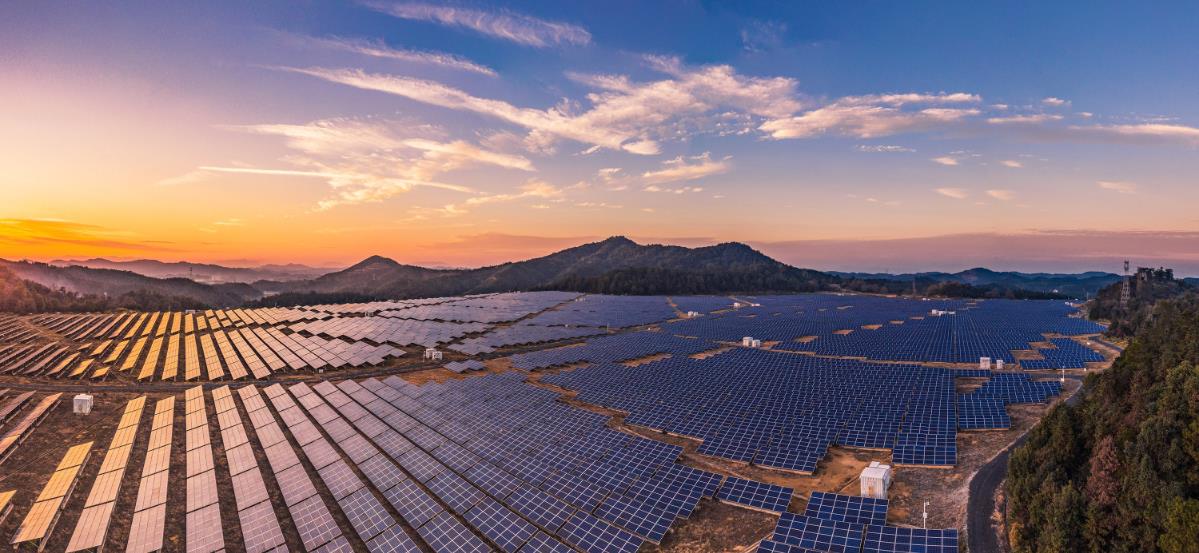|
The scenicHarki Island is a small Greek island located in the South Aegean Sea.Recently,1000000W solar photovoltaic power station was built here, becomingGreece's first energy self-sustaining island, with electricity bills for morethan 400 households and nearly 100 businesses.According to the Ministry ofEnvironment and Energy, several outlying Greek islands, such as Harki Island,have not previously been connected to the national grid, causing a highelectricity cost. To this end, the Greek government implemented the"ecological island" plan and took the Kharji Island as the firstpilot area, through the development of solar power generation, to make up forthe shortage of unbalanced power supply.

Greeceis rich in solar energy resources, with an annual sunshine hours of about 3,000hours and an annual solar radiation capacity of 1,400-1,800 KWH / squaremeter.In recent years, Greece has actively promoted solar power generation. InApril last year, Greece invested 130 million euros to build a photovoltaic parkin the northern coal producing area, with a total installed capacity of 204000000Wand can meet the needs of 75,000 households, making it one of the largest solarpower projects in the eastern Mediterranean region.Greece's installed solarcapacity grew by 110 percent between 2018 and 2022, above the EU average, saidNick Zafs, a Greek energy expert.

In aneffort to attract corporate investment in solar power projects, the Greekparliament passed a new bill last July to simplify the approval process forrenewable energy projects and introduce a regulatory framework for energystorage projects.Driven by favorable policies, solar power projects in Greeceare increased rapidly. According to Greek media reports, the country added1,340000000W of new solar power capacity in 2022, a record high. During thesame period, solar power accounted for 12.6 percent of total electricitygeneration, the second highest among EU countries.Greece is also buildingagricultural photovoltaic power stations across the country, which can engagein agricultural activities while meeting the needs of photovoltaic powergeneration. In the central Thessaly region, photovoltaic plants are also builton some agricultural irrigation canals to increase clean energy while reducingwater evaporation. Meanwhile, to encourage the active use of clean energy, theGreek government announced in May that it would provide 40-60 percent subsidiesfor households equipped with solar panels for a total of 238 million euros.

Atpresent, in order to solve the problems of insufficient load capacity of the ongrid and the difficulties of connecting some photovoltaic projects to the ongrid, the Greek transmission and distribution network operators are upgradingthe existing grid, accelerating the construction of new lines at the same time,and reserve the grid capacity to connect large-scale photovoltaic projects. TheGreek government says that photovoltaic projects without temporary access tothe grid can enjoy their feed-in tariff subsidies.

Accordingto the Greek government's 2030 National Energy and Climate Plan, it willaccount for 35 percent of Greece's total energy consumption by renewablesources and install 7.7 gigawatts by 2030. Greece also passed its first climatebill last year, announcing that it would shed coal power by 2028. Greek Prime MinisterMitsotakis said the government's goal is to provide affordable and sustainablemodern energy, which will accelerate the approval of renewable energy projectssuch as solar energy and reduce its dependence on fossil fuels.

MultifitSolar Founded in 2009, based on providing world-class small photovoltaic powerstation solutions and renewable energy electrical products innovative researchand development, we have trained a group of ideas, experienced, technical salesand research and development team. In the future, we will also uphold themission of efficient energy saving, let more people enjoy the development ofgreen energy, based on the photovoltaic industry, and strive to build thecompany into a respected first-class photovoltaic industry.
|

 6 Keji west road. Hi-Tech Zone Shantou City, GuangDong,China
6 Keji west road. Hi-Tech Zone Shantou City, GuangDong,China +86-0754-81888658
+86-0754-81888658 multifit@multifitele.com
multifit@multifitele.com